Gardening with Friends
One Gardener's Approach to Helping Others Create a Pollinator Oasis
It’s exciting to think about planting a pollinator garden, creating a beautiful flowery oasis and contributing to the health and well being of pollinators. But looking at a large patch of dirt can be daunting and discouraging. Where do you even start?
Carol McClain is a prolific gardener and a member of Pollinator Pathway NW. Her approach to gardening is slow and systematic. She encourages education and an examination of what your garden can be. To help others, Carol runs a sort of free nursery. She starts plants from seeds and gives them away. Carol’s advice and assistance are helping people begin their gardening projects.
Keep reading for Carol’s approach to gardening and the challenges that can pop up in the course of creating your pollinator garden. Check back for the “after” pictures of the yards.
How to Start and When
Preparing your garden starts about six months before you actually plant. Start in the spring to plant in the fall or start in the fall for spring planting.
Decide
- How big or small do you want your garden to be.
- We want to do it all, but we can’t. Think about what is reasonable to do this year.
- Mark out the area with a few stakes. If your garden will border grass, think about using a curved border instead of a straight line for a softer look. I typically use a garden hose to outline the grass/garden edge.
- Are there plants in place that you want to keep? Sometimes adding native plants to a garden bed is all you have to do to support pollinators.
Observe
What are the characteristics of your future garden site?
- Light – Is it in a sunny or shady location, or some of both?
- Moisture – Is the garden area on a slope, or in a depression, or flat? Are there areas that are typically damp?
- Soil quality – Is the ground hard packed, rocky or soft? Take a long screw driver and try to drive it eight inches into the soil. How hard is it to do that? The roots of your plants will have to push through that same soil.
- Weeds/grass – If this area currently has grass, you will want to mow it down to the lowest possible level. Weeds such as blackberry, buttercup, bindweed and dandelions should probably be pulled. Other weeds can be weed-whacked as low as possible.
Get your hands dirty! Prepare you future garden
- Get rid of weeds and grass by mowing, weed-whacking and pulling.
- “Cover to smother” to prevent weeds and grass from regrowing. Use cardboard or several layers of newspaper to cover the area.
- Make healthy soil by covering the cardboard or newspaper with four inches of mulch or wood chips. These break down over time, providing important nutrients to your soil. This layer also helps hold moisture in the soil so the area will require less watering.
Take a break (Very Important)
Give your garden bed and yourself a well-deserved break. The cardboard and mulch need time to break down. In six months you will have richer soil with fewer weeds waiting for you to plant.
What to Know About Plants
Start with plants that can anchor the garden – trees and shrubs – then concentrate on the smaller plants.
Plant your garden in the spring and fall because the climate during those seasons is encouraging to rooting and new growth.
When shopping for plants, remember that all that glitters is not gold. Plants are often grown in greenhouses under stress to get them to bloom so they can attract shoppers. Plants grown under these conditions are not likely to survive. Instead of looking for the next pretty flower, plant something that doesn’t look lovely at first. It’s important to understand what your plant will become.
Plants will not miraculously become lush and colorful the first season you plant them. They need to establish themselves. The first year the best things happen below ground. The plants sleep and nurture their roots. The second year they creep and the third year they leap.
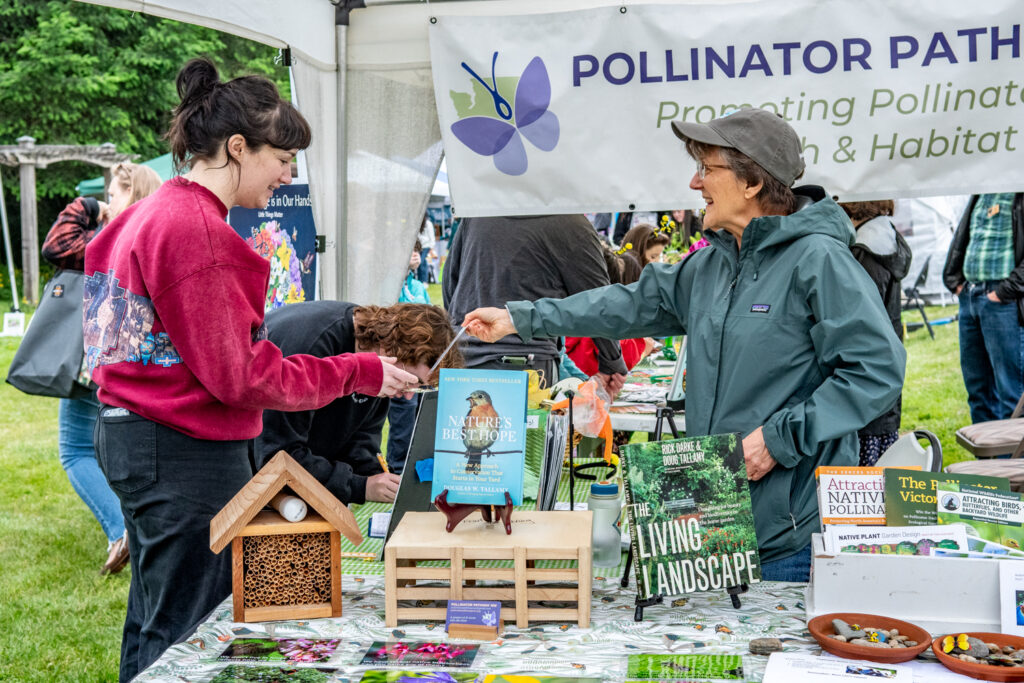
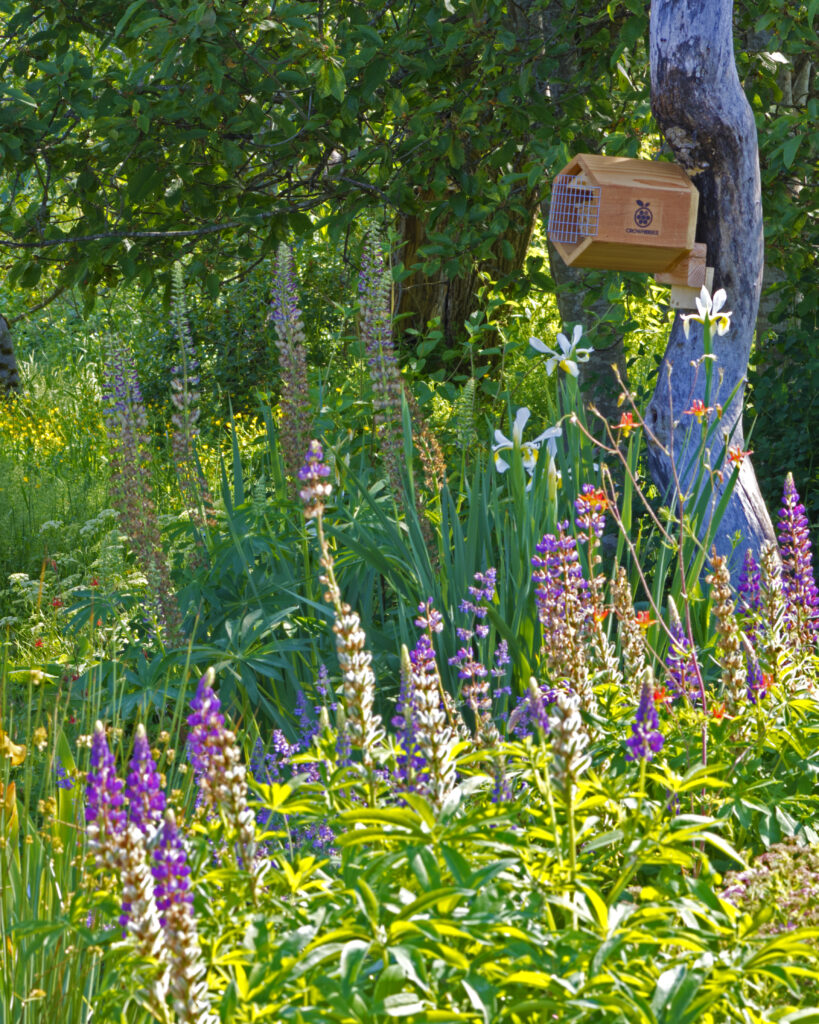
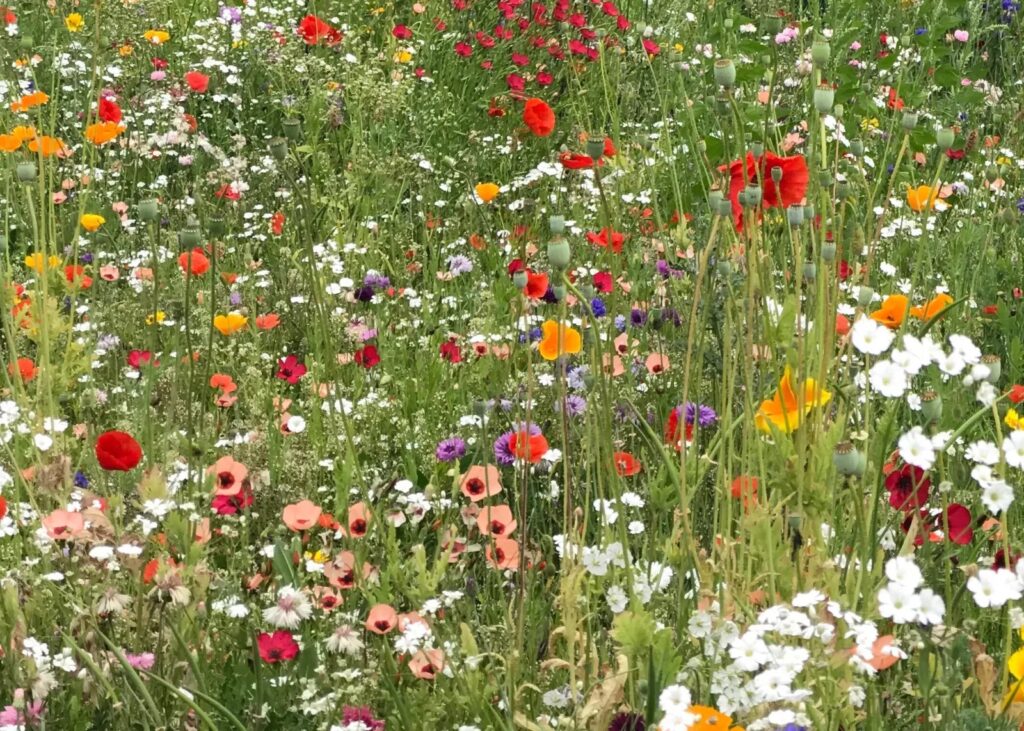
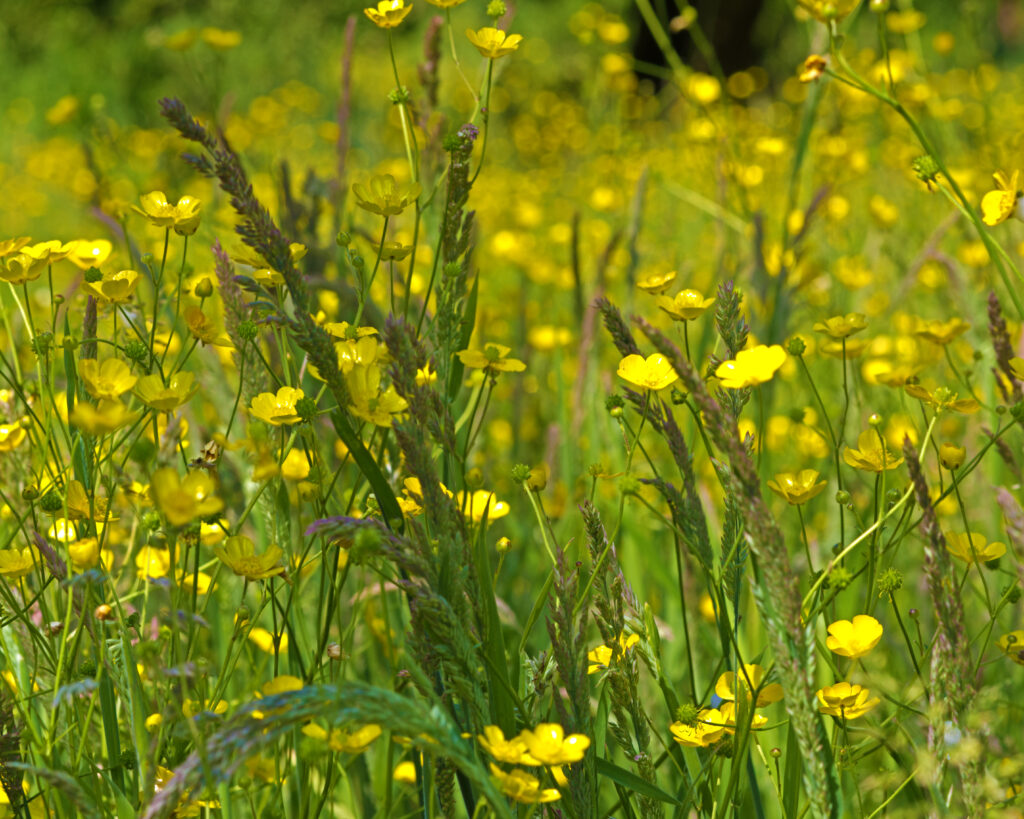
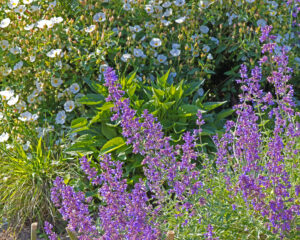
Soil
Some quality topsoil, free of neonics or pesticides, will give you a start. Then it’s important to add mulch. Mulch creates soil and this takes time. Gardening is about patience. Plants and soil have a harmonious relationship. Plants feed the micro climate in the soil and release minerals to make available to the soil. Mulch is important for plant survival as it keeps plants from freezing and keeps them cool in the summer.
Native Plants
Do you have to plant native plants? And what are they anyway? Native plants occur naturally in a region and have a special relationship with the native bees, butterflies and other bugs. They have evolved together, allowing the insects to feed from and efficiently digest the native plant, resulting in the biodiversity necessary for healthy pollinators and effective pollination. Native plants require less water, less fertilizer, can prevent water run-off and improve air quality. Here is more info on why to plant natives.
But native plants often get a bad rap. They aren’t always pretty when you buy them and some of the names are not appealing. Often they are hard to find, but the search is worth it because many native plants are gorgeous, and your pollinators will thank you.
However, don’t pull out plants that might already be there to plant natives. Some non-native plants can add color and depth to your garden, but use them sparingly because they can compete with and crowd out native plants. A 70-30 mix of natives and non-natives should give you a healthy pollinator garden.
Karen's Shade Garden
Karen sought Carol’s advice to start refurbishing her large yard, which is mostly shady and had been left unattended for some time. Her property abuts an undeveloped woodland area and part of the yard had for years been a play area with layers of sand left after the play equipment was gone. Karen is covering this area with mulch and can now think about planting.
Carol’s advice was to start planting in the fall and give trees and shrubs a chance to winter over. She provided Karen with Sea Blush, Showy Milkweed, Western Yarrow, Snowberry and Marigolds.
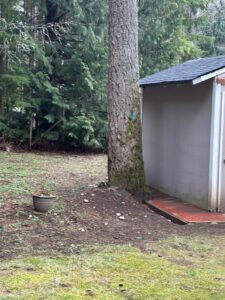
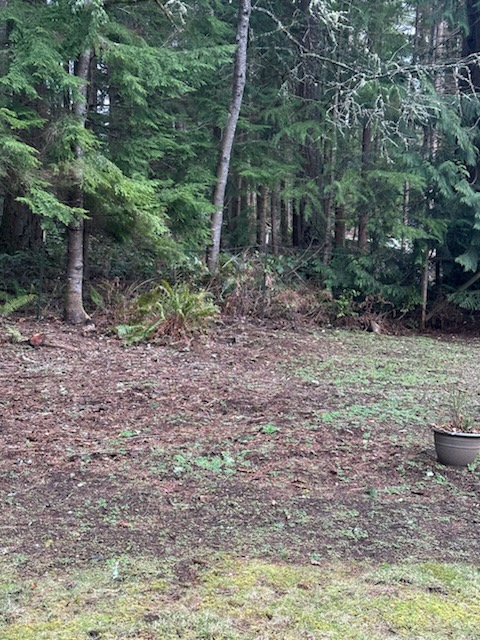
Joan's Garden
Joan spent 32 years living an urban life, with little opportunity for gardening. Her condo in southern California allowed her to plant only container plants. After moving to the Pacific Northwest and buying a house, Joan was eager to get started on her pollinator garden. But she had to let the land sit over the winter while she dealt with house issues, including rebuilding her chimney.
Joan’s yard is both sunny and shady. Big trees border the property, creating a forest area that provides constant shade. Pine needles and pine cones from the forest provide great mulch.
In the spring, Joan was ready to plant. But she was not familiar with Northwest native plants and wanted Carol’s input as to what to plant and where.
Joan planted her yard in April, but did minimal soil preparation. From Carol’s starts she planted Sea Blush, Current, Wood Sorrel, Hardy Fuschia and Bleeding Heart, and supplemented with some plants of her own, such as Penstemen. But within just weeks, rabbits and other critters had eaten all of her plants.
Joan purchased and installed chicken wire to keep out the critters and prepared to start over.
She laid out several inches of mulch to enrich the soil. By this time, it was late July. Some planting could be done in late summer and fall, but some would have to wait until spring.
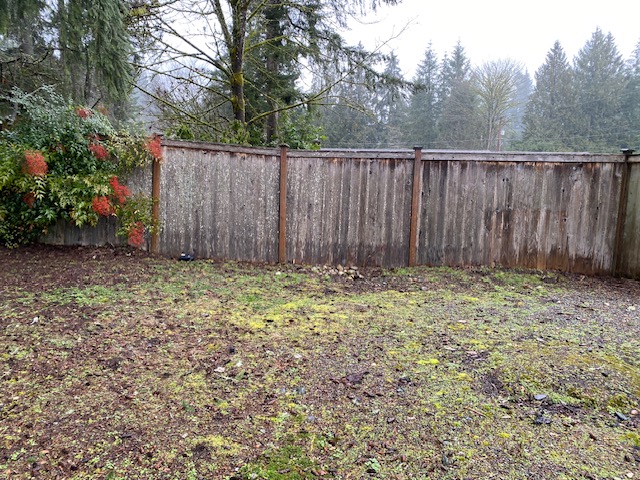
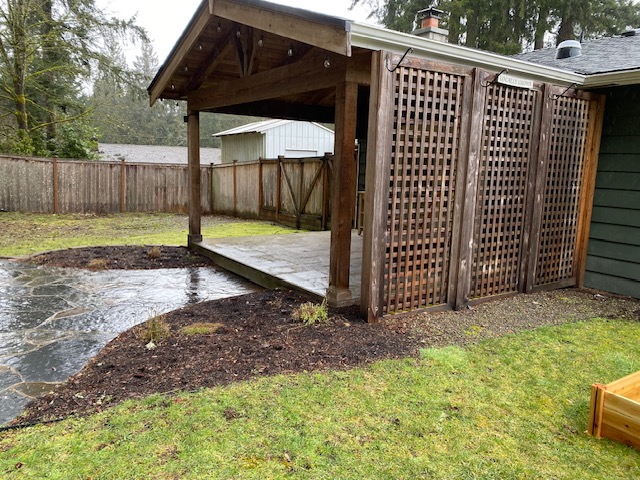
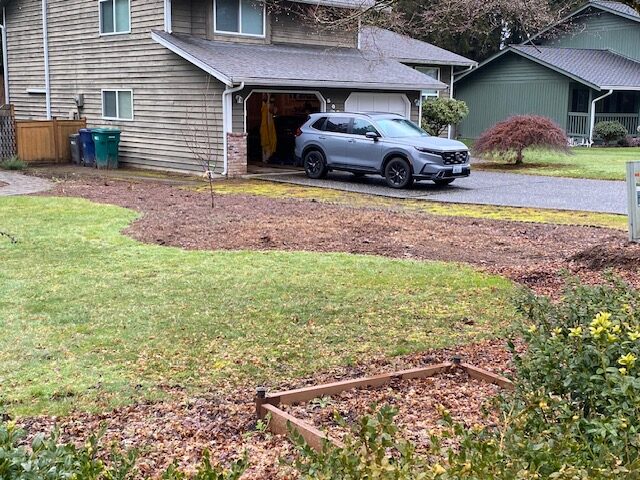
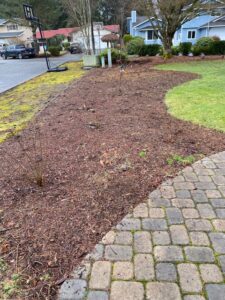
Nancy's Garden
Nancy spent several years putting down newspaper, compost and wood chips to prepare her garden for planting. But she had never gone beyond this step. She just didn’t know what to do next.
Carol suggested starting with native shrubs. They planted wax myrtle and rhodendron. In the fall, flowers will go in – showy Fleabane and Yarrow.
